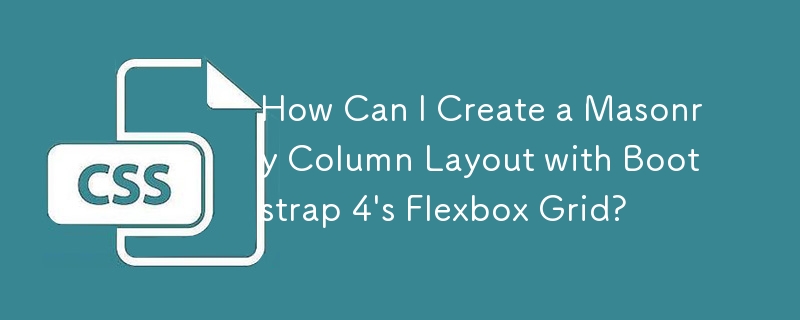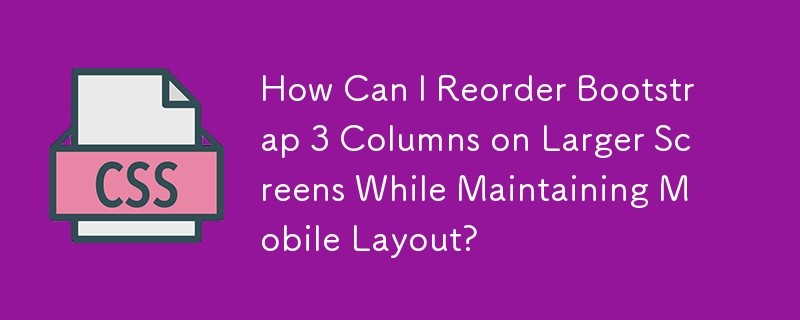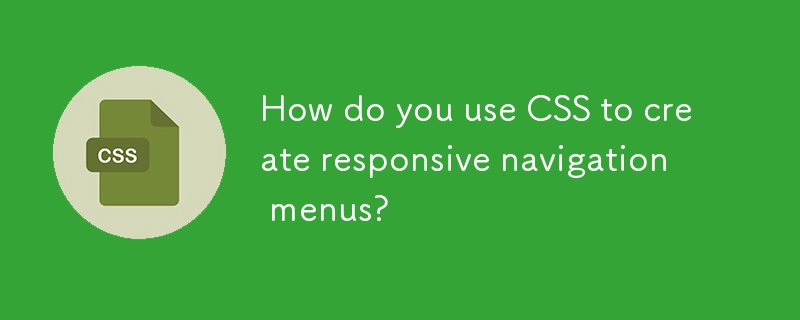Found a total of 10000 related content

Building Responsive Navigation with Bootstrap: A Complete Guide
Article Introduction:The reason for building navigation using Bootstrap is that it provides a powerful, mobile-first design approach. 1) Bootstrap's mesh system and pre-built components make creating responsive layouts efficient. 2) Its huge community and detailed documentation provide strong support. 3) Use Bootstrap to quickly prototype the responsive navigation bar. 4) By adding the fixed-top class and adjusting the page fill, the problem of blocking content on the top navigation bar can be solved. 5) The drop-down menu in the navigation bar can effectively organize navigation projects and improve user experience. 6) Use CDN to optimize Bootstrap file loading to improve performance. 7) Ensure accessibility of the navigation bar and enhance disability by using ARIA attributes
2025-06-17
comment 0
309



Bootstrap Navbar Tutorial: Build a Responsive Navigation Menu
Article Introduction:Building a responsive navigation menu with Bootstrap can be achieved through the following steps: 1. Using basic settings, create a navbar with adjustable layout using Bootstrap's flexible grid system. 2. Make navbar more diverse through custom options such as changing colors, adding drop-down menus, integrating search forms, etc. 3. Pay attention to avoid common errors, such as incorrect use of collapse function and ignoring accessibility. 4. Optimize performance, consider using CDN and loading only the required components. 5. Follow best practices and keep navbar concise and consistent with website design. Navbar using Bootstrap can be quickly prototyped and iterated based on user feedback, thereby improving the website's ability
2025-06-27
comment 0
640

How to create a responsive navigation bar in Bootstrap?
Article Introduction:To create a responsive Bootstrap navigation bar, you need to use Bootstrap's built-in navigation components and correctly set the HTML structure. 1. First, introduce the CSS and JSCDN links of Bootstrap5 to ensure that the style and fold buttons are functioning normally; 2. Use build navigation containers, where the navbar-expand-lg control is expanded above the large screen, and the small screen is displayed as a hamburger menu; 3. Add the navbar-toggler button and cooperate with data-bs-toggle="collapse" and data-bs-target="#navbarNav" to achieve mobile menu switching;
2025-08-14
comment 0
1028

Bootstrap Deep Dive: Responsive Design & Advanced Layout Techniques
Article Introduction:Bootstrap implements responsive design through grid systems and media queries, making the website adapted to different devices. 1. Use a predefined class (such as col-sm-6) to define the column width. 2. The grid system is based on 12 columns, and it is necessary to note that the sum does not exceed 12. 3. Use breakpoints (such as sm, md, lg) to define the layout under different screen sizes.
2025-04-10
comment 0
1119

How to create a responsive blog post layout in Bootstrap
Article Introduction:Use Bootstrap5's 12-column grid system to create a responsive blog layout. The main content area uses col-12col-md-8, and the sidebar uses col-12col-md-4 to achieve the adaptive effect of mobile stacking and medium-screen side-by-side; 2. Improve readability through Bootstrap's typesetting tools such as lead, mb-4, and img-fluid to ensure that the image is responsive and the spacing is consistent; 3. Use responsive tools to d-none-md-block and d-md-none to control elements to display on different screens, such as hiding the mobile sidebar or displaying the mobile directory; 4. Use semantic HTML tags such as article, time and add al
2025-09-03
comment 0
295

Responsive navigation menu: JavaScript and CSS implement hamburger menu sublist and desktop hover effect
Article Introduction:This tutorial explains in detail how to work in collaboration with JavaScript and CSS to solve the problem that the responsive hamburger menu cannot be expanded on the mobile terminal list, and ensure the hover effect of the desktop navigation items. The core method is to dynamically add/remove a "active" class for menu items using JavaScript, and control the submenu display status when the class exists through CSS, and at the same time, it is supplemented by media queries to implement interactive logic under different devices.
2025-08-12
comment 0
458

How to create a navigation bar in HTML
Article Introduction:Use and create semantic navigation structures, and each link is wrapped with a wrapper tag; 2. Set list-style-type:none to remove bullets through CSS, float:left to achieve horizontal layout, padding and background-color beautify styles, and add hover effect with :hover; 3. Use media query @mediascreenand(max-width:600px) to set float:none to make navigation on small screens vertically stack, realizing basic responsive layout. A complete navigation bar needs to combine semantic HTML, CSS styles and responsive design to ensure complete functionality and adaptability to multiple devices.
2025-09-05
comment 0
381


How to do bootstrap framework
Article Introduction:To use the Bootstrap framework, you need to: 1) introduce Bootstrap CSS and JavaScript; 2) create page structures, use grid systems, navigation bars, and layout components; 3) use inline classes and components to style and add functions; 4) implement responsive design and use media queries; 5) explore advanced features such as modularity and customization.
2025-04-07
comment 0
582

How to make a responsive navigation menu with HTML5
Article Introduction:To create a responsive navigation menu, you must first use HTML5 semantics, then implement desktop layout through CSSFlexbox, and use media queries and JavaScript to display and interact with mobile hamburger menus, ultimately implement cross-device compatible smooth responsive navigation.
2025-08-18
comment 0
982



















